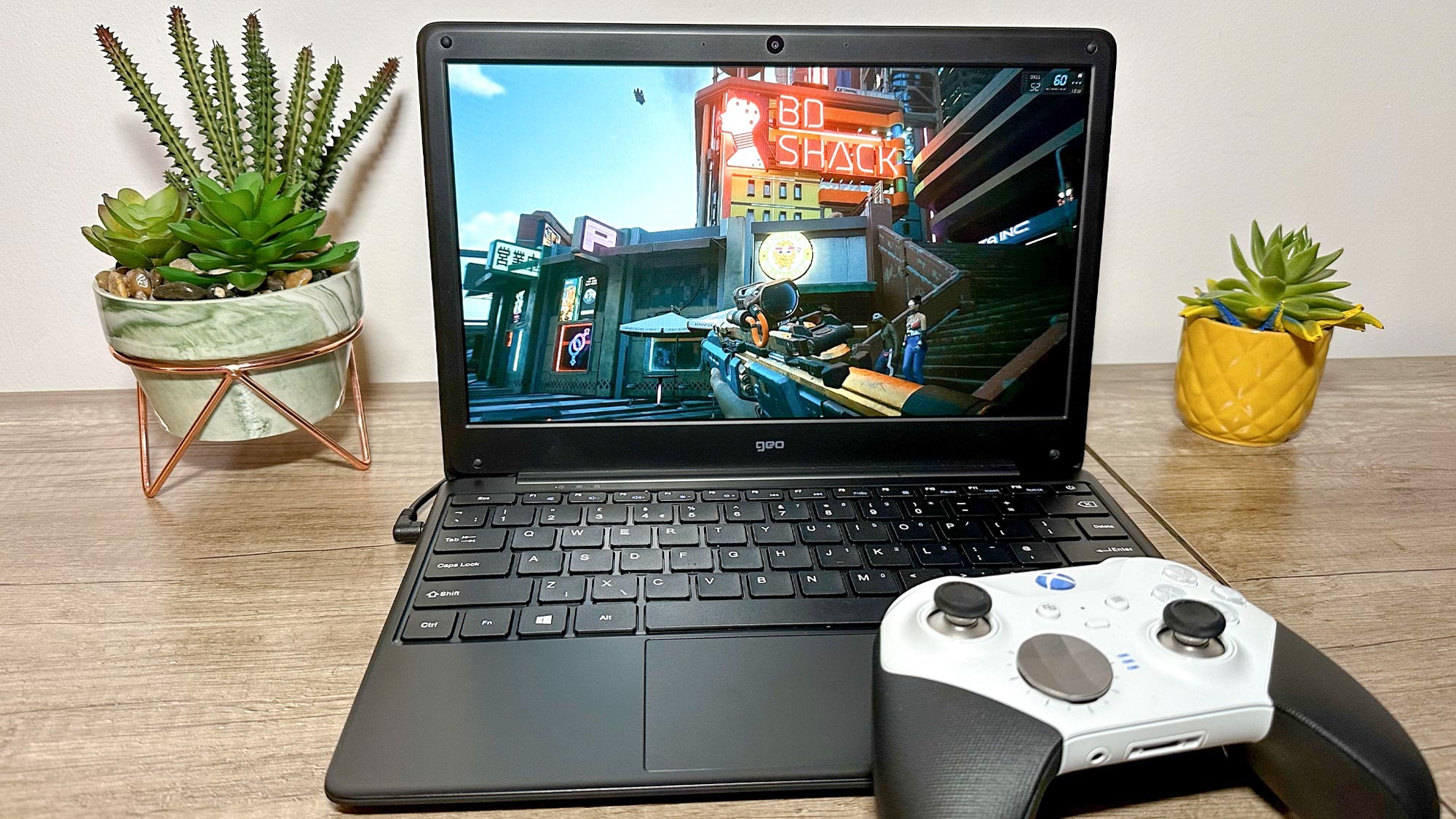
I’ve preached this from multiple mountaintops before, but it’s worth repeating: Nvidia GeForce Now is the best cloud gaming service I’ve ever used.
Skip back a few years when Google Stadia was soiling its sheets and disappointing players everywhere with unacceptable lag, and I never thought I’d get to a place where I was fully on board with the power of the cloud.
Yet here we are.
When I say GeForce Now is the best game streaming service available today, I specifically mean GeForce Now Ultimate. The top-tier subscription Nvidia offers costs $20 per month in the US and £18 in the UK. For that, you get access to servers that replicate the power of the impressive GeForce RTX 4080 GPU, which is capable of powering high-end gaming experiences up to 4K at 120 fps — provided you have one of the best gaming monitors that can support such a demanding resolution and refresh rate.
Such is my faith in Nvidia’s class-leading streaming tech (after testing it out on a variety of gaming laptops, including the exceptional Asus ROG Zephyrus G14 (2023)) that I decided to give GeForce Now Ultimate a test drive on a certain $120 laptop I recently put through its paces.
Such is my faith in Nvidia’s streaming tech, I'm testing it out on the cheapest laptop I've ever used"
I alluded to the impressive results Ultimate eked out of the plucky little GeoBook 2E in my previous article. For context, this is an ultra-budget 12.5-inch laptop with a weedy Intel Celeron N350 CPU and just 4GB of DDR4 RAM. After diving back into Ultimate to retest Cyberpunk 2077 and several more of the best PC games of the last couple of years, I’m more impressed with Nvidia’s streaming platform than ever.
Before I dive into my experiences using GeForce Now Ultimate with a laptop that costs far less than the PSU in my desktop gaming rig, let’s get some key requirements out of the way first.
If you want to squeeze the most out of Ultimate, you need decent bandwidth. Nvidia recommends broadband speeds of at least 45 Mbps to stream games in 4K at 120 fps. If you’re gaming on a 1080p monitor and want to hit 60fps, though, you’ll only need a 25 Mbps connection.
I want it Now

Providing your internet is up to the task, hot dang does GeForce Now Ultimate ever deliver. I’m privileged enough to live in an area of the UK where I have access to 1TB full fiber optic broadband, which makes squeezing the best results out of Nvidia’s streaming service a relative breeze. Super speedy interwebs or not, seeing (and more crucially, playing) Ultimate in action is something else.
The poor little GeoBook 2E — which sadly for our US readers only appears to be available in Europe at time of writing — doesn’t exactly boast the most stellar screen specs. Yet when I start streaming games on GeForce Now through that sub-1080p display (screen resolution is just 1366 x 768), the results still impress. Color reproduction, black levels and contrast performance pass the eyeball test more than you’d expect from a device that costs less than $150.
The added benefit? That humble screen resolution lets you crank up every graphics setting to the max in each of the games I stream through Ultimate; with average frame rates almost never dipping below 60.
The best example of the sturdiness of Nvidia’s streaming tech you can currently find is in Cyberpunk 2077. Though it proved divisive at time of release in late 2020, a slew of post-launch patches have since massively improved performance on both PC and consoles.
The best example of the sturdiness of Nvidia’s streaming tech you'll find comes in Cyberpunk 2077"
This may be an unpopular opinion, but I'm comfortable with admitting Cyberpunk is one of my favorite games of the last five years.
And hoo-boy does it run like a dream on GeFore Now Ultimate on my lightning quick fiber. After firing up the GeoBook 2E and booting CD Projekt RED’s ambitious open-world RPG, the sheer visual fidelity instantly outguns what you can experience on either PS5 or Xbox Series X.
Sure, the resolution is a lot lower than on the next-gen consoles, purely down to the limitations of this ludicrously cheap laptop. Yet when it comes to graphical bells and whistles, Ultimate serves up a delicious streaming buffet for your eyes to feast upon.
Night City slickers
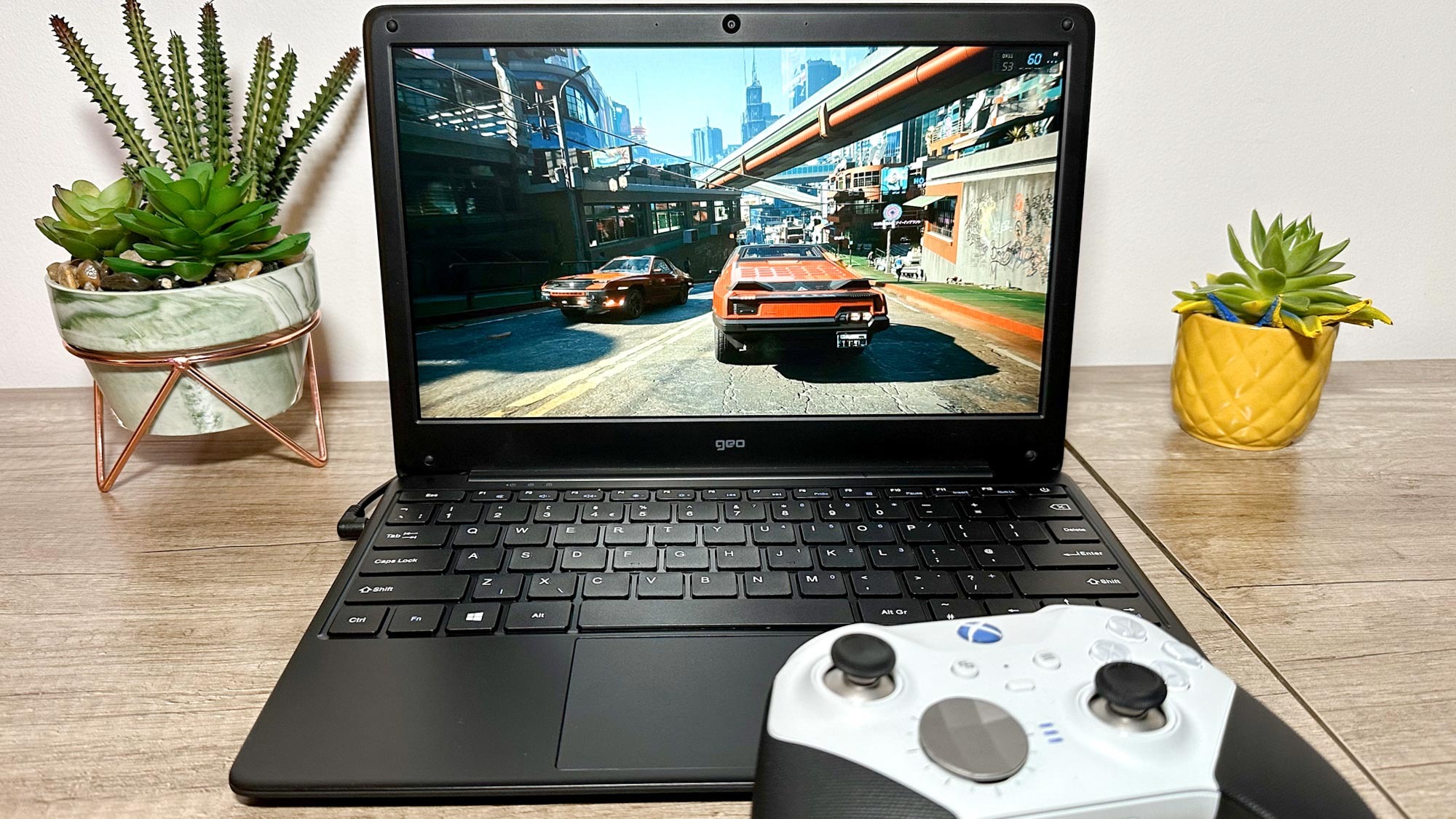
With mostly high settings enabled (included path tracing, no less), even the busiest of traffic on the seedy streets of Night City can’t make GeForce Now Ultimate dip below 60 fps on the Geo. Seeing the most cutting edge PC game around with nary a hint of artifacting on a device that's priced at a pittance in laptop terms is scarcely believable.
It’s not just Cyberpunk that impresses through the weirdly effective tag team of GeForce Now Ultimate and the cheapest laptop I’ve ever tested. Deathloop, Resident Evil 2 (2019) and Doom Eternal all keep to a locked 60 fps with minimal stuttering — I also run the latter two titles with ray tracing enabled, which makes these frame rate results even more startling.
Slaughtering Hell’s baddest beasties in the Doomslayer’s breathless shooter also hammers home the effectiveness of enabling Nvidia Reflex. While lag feels pleasingly low to my obsessive fingers throughout my GeForce Now Ultimate experiences, enabling Reflex slashes input delay even further.
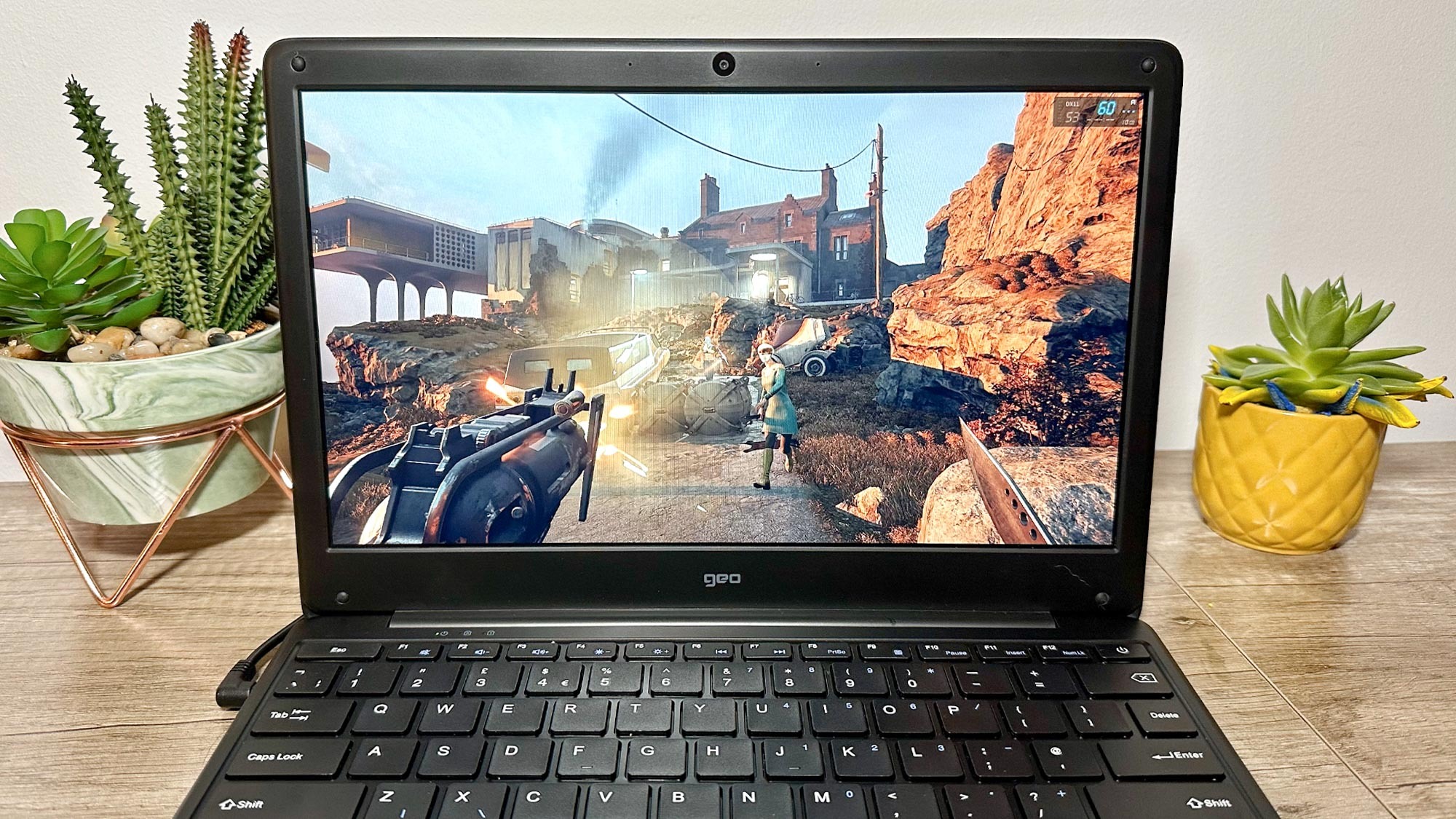
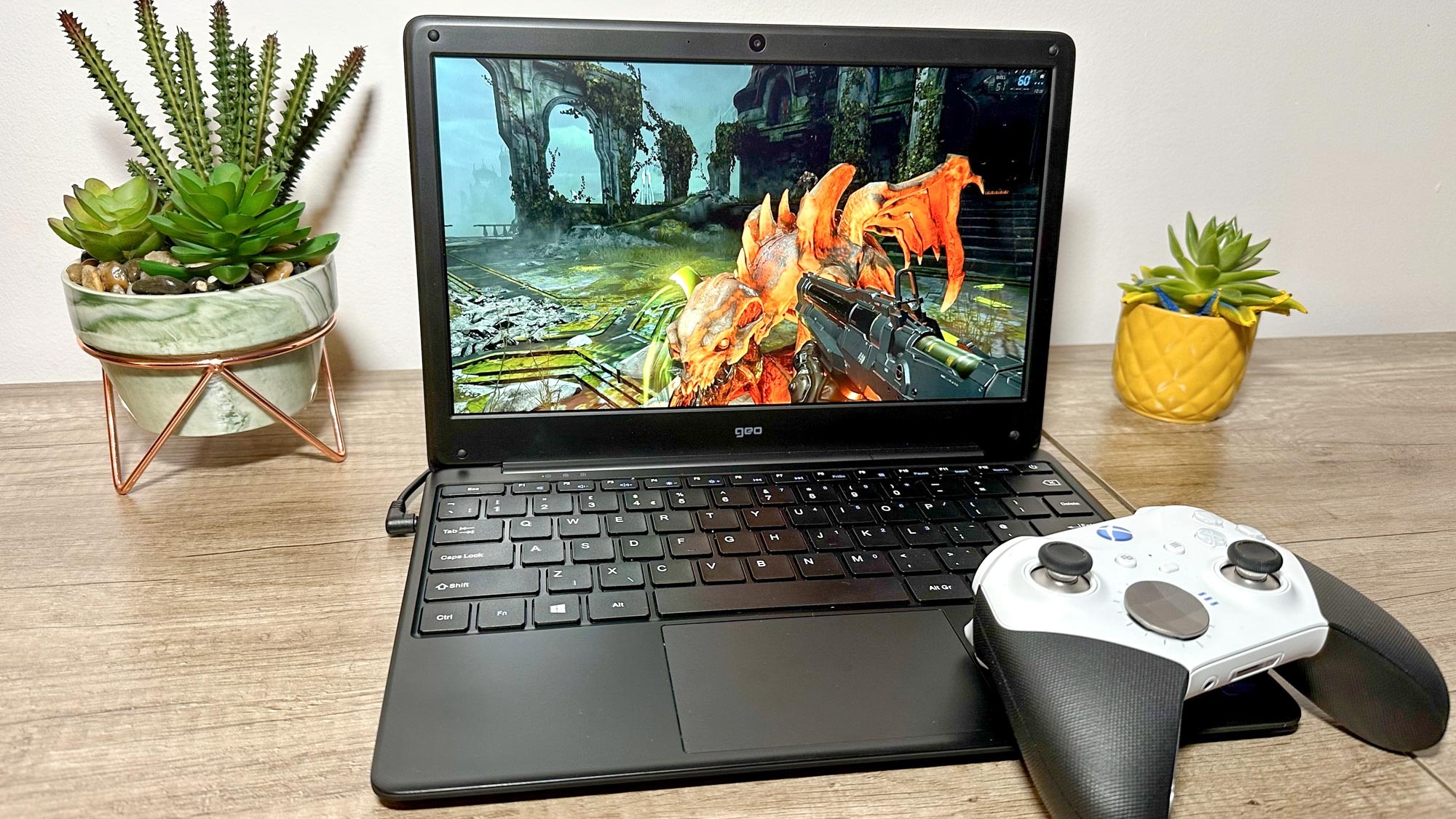
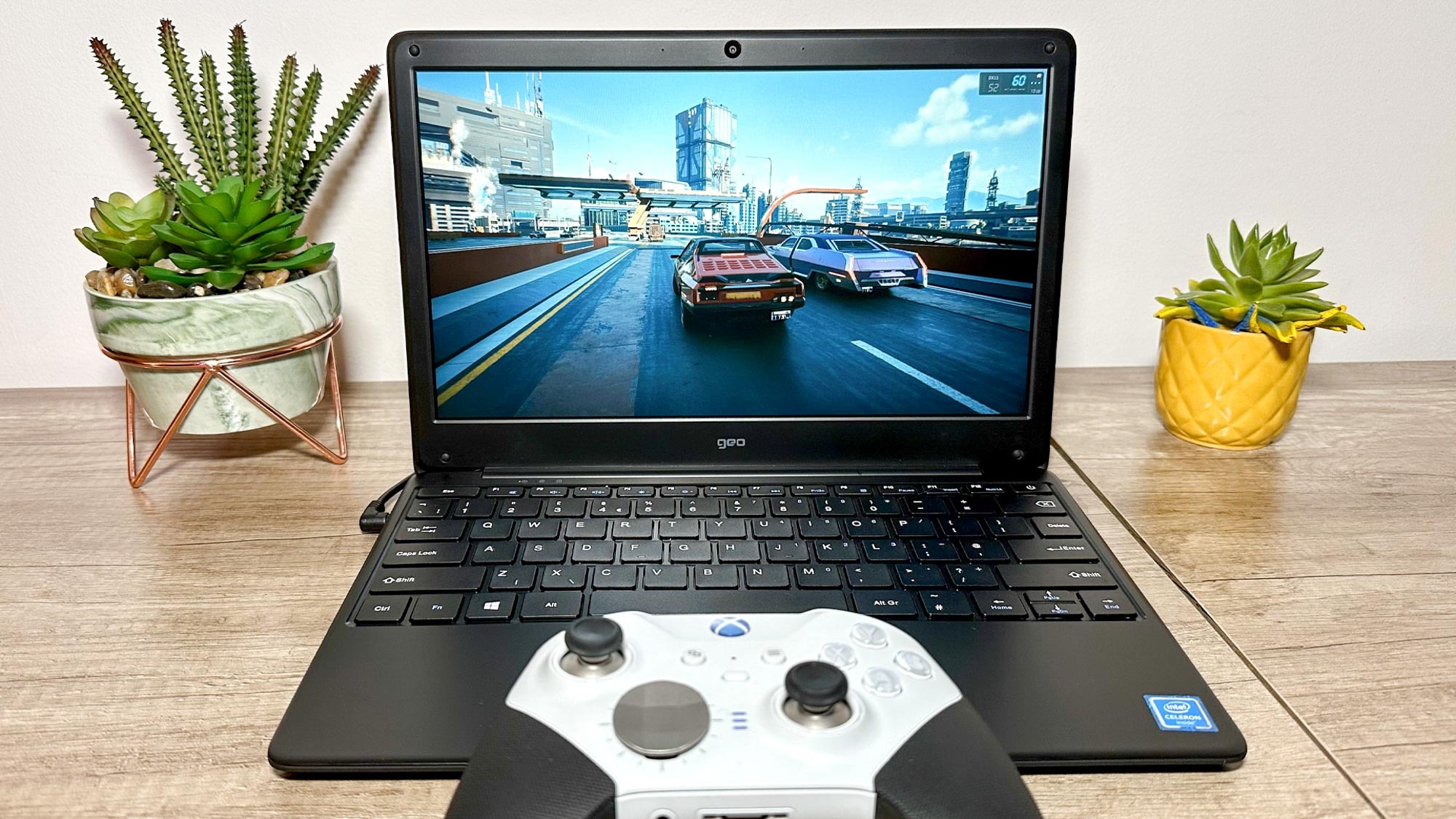
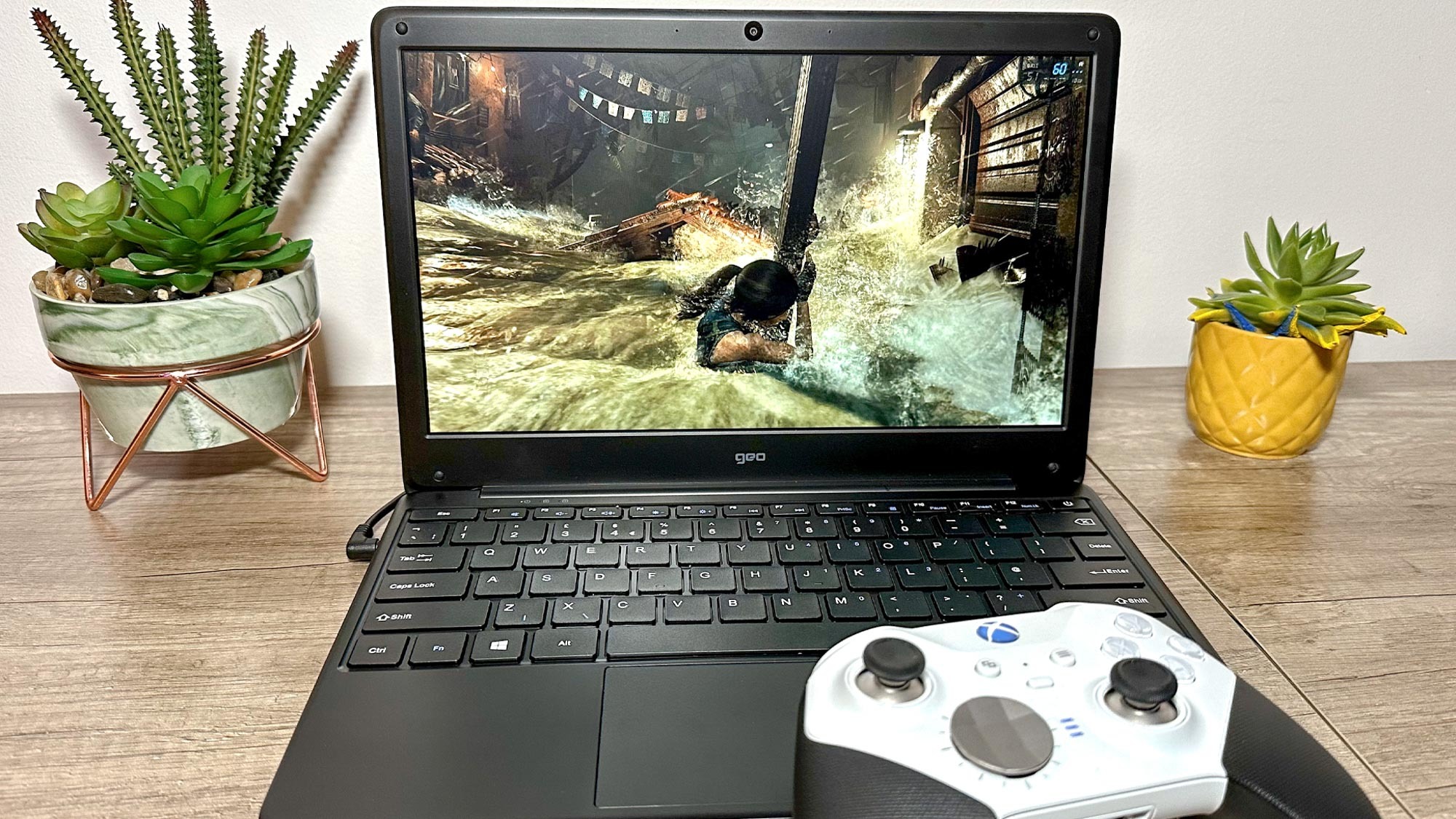
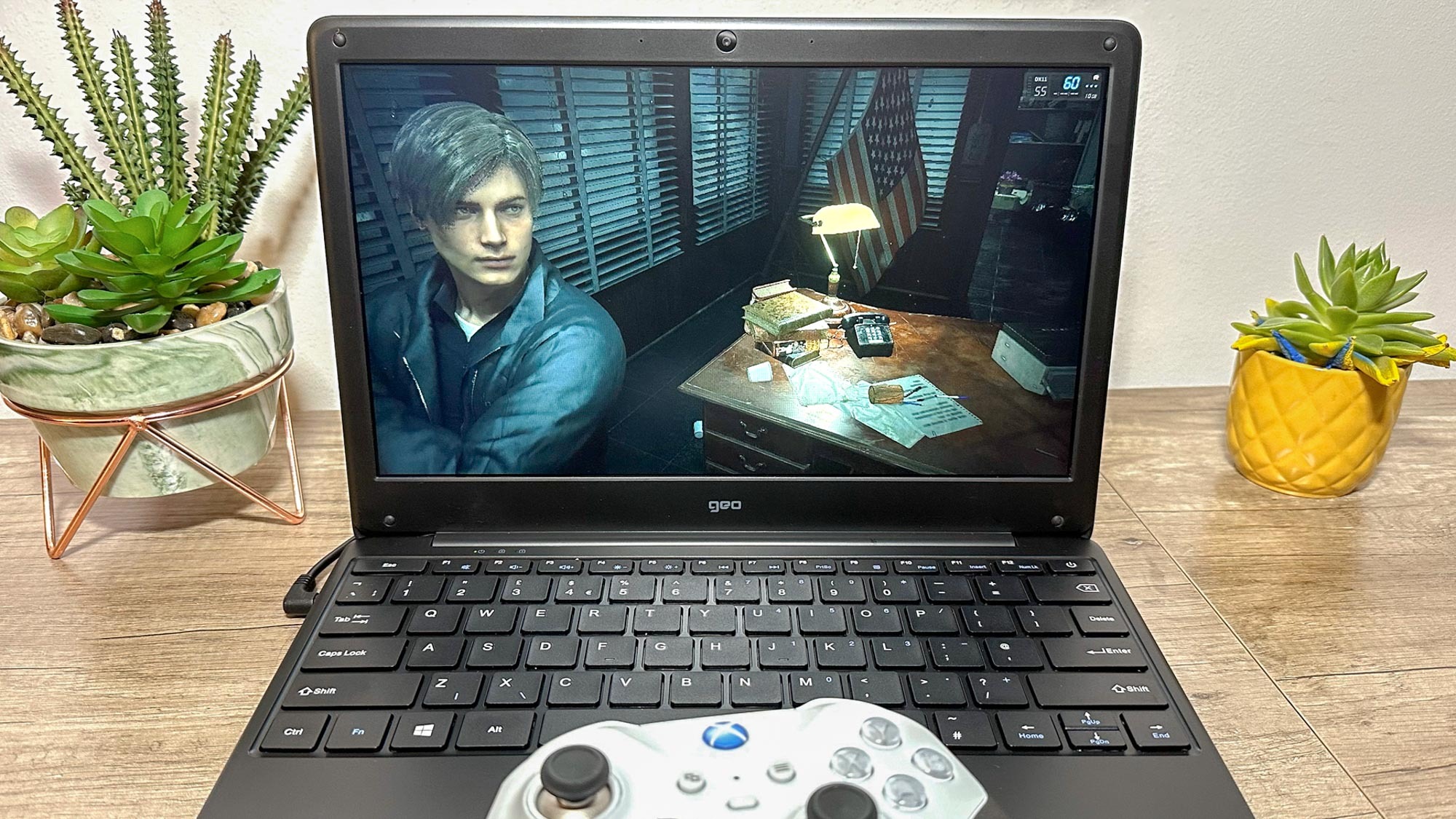
Thankfully, Nvidia Reflex is easy to enable through GeForce Now’s clean and intuitive menus, which perform snappily even on a laptop that could barely put up a fight with Sony’s now 17-year-old PS3.
The variety of settings Now lets you tinker with based on the quality of your broadband is also welcome. There are four presets (Balanced, Data Server, Competitive and Custom) that let you tweak your streaming service according to the strengths or limitations of your connection.
Balanced uses 9GB of bandwidth per hour, delivering the best image quality possible in the process, while Data Server limits usage to 4GB per hour for those with slower connections. Meanwhile, the Competitive preset eats up 14GB of data per hour, and is clearly aimed at hardcore FPS fans who want to play twitch shooters like Apex Legends at up to a head-spinning 240 fps.
Whatever way you slice it, Nvidia has put the legwork in to ensure gamers with even middling internet speeds can still enjoy a decent streaming experience on GeForce Now.
Hitch in the system

The only major issues I encounter with Nvidia’s cloud platform are few and far between. Booting up Shadow of Tomb Raider, I encounter some brief hitches during an opening flood sequence where performance plummets to 24 fps several times as Lara struggles to keep her head above cascading waters.
Getting The Witcher 3: Wild Hunt to load on GeForce Now also proves troublesome. When I try to launch my GOG version through Team Green’s streaming service, an update window repeatedly prevents Geralt’s fantasy epic from starting.
While accessing GeForce Now-compatible titles I own across different storefronts is mostly easy, there’s an issue when trying to sync the best Epic Games Store games from my library. Streaming games across my Steam, GOG, Ubisoft Connect and Xbox Game Pass accounts proves straightforward, yet my Epic library refuses to sync with Now after repeated attempts.
The overall experience of using GeForce Now Ultimate on the cheapest of cheap laptops has been a slam dunk success story, though. Playing games natively on one of the best gaming PCs would still remain my preference, no doubt.
Using GeForce Now Ultimate on the cheapest of cheap laptops has been a slam dunk success story."
Yet as an alternative for gamers with modest laptops or desktop rigs who have speedy broadband, the highest level of Nvidia’s cloud service can offer terrific, near lag-free experiences.
To put all of the above into eye-rubbing context, the awesome gaming sessions I’ve been enjoying on GeForce Now Ultimate cost around $140 / £120 for a month of the streaming subscription plus the underpowered laptop. That’s a fraction of what I paid for my beloved Nintendo Switch OLED; and that's a console that can struggle to run games at sub-720p resolutions at 30 fps in Portable mode.
When it comes to my opinions on cloud gaming — at least in regards to Nvidia’s take on the tech — I’ve done a complete 180.







